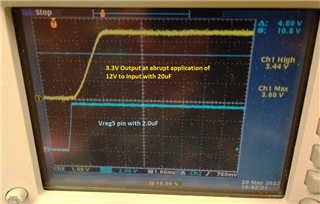Other Parts Discussed in Thread: TPS54427,
Have approved either TPS54427 or TPS54428 for this application. This circuit is working well for us for 5 years in production where the V_IN is a fixed 12VDC from another internal SMPS. In that case D13 is 7.5V and R6 is 4.99K.
Now, for a new design we want the external input range to be 4.5 to 18V, so we need to be enabled at a lower threshold and hence the change to D13. R6 will rise to 10K to minimize power dissipation at Vin=18V. Need to know how to protect this converter.



